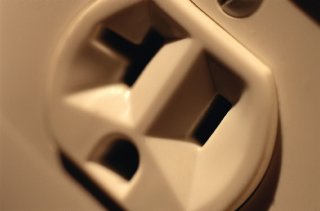You can start saving money now by making small adjustments around your home and small investments in a greener future

1. Switch off at the power point
Every room in your home offers no-fuss ways to reduce your electricity bill. A great way to start is simply to turn things off. TVs, DVDs, set-top boxes, games consoles, stereos and computers are the obvious culprits but even the humble kettle will continue to use electricity if it is not switched off at the power point. A microwave oven can use more power running its clock than cooking food.
Smart power boards are available that can switch off up to five appliances with one button. Some even come with an energy calculator that tells you how much energy and money you’ve spent just on those few appliances that are plugged in.
Savings: $125 each year
#pb#
2. Move to standby
Switching appliances to their standby mode helps as well. As much as 10% of your annual power bill comes from appliances that are on when they don’t need to be.
Savings: $120 or more each year, depending on the size of your household.
3. Get rid of the spare fridge
Electricity is probably being wasted right under your nose. Are you keeping an extra fridge – or a fridge that is bigger than you need – on all the time just in case you want that occasional extra case of beer? Are you heating or cooling the whole house when you’re only using a few rooms? Have a look at every room and see what waste is happening.
Savings: $265 each year
#pb#
4. Have a home energy assessment
A home energy assessment can identify the different possibilities for saving money and reducing your impact on the environment. Assessments can be organised through your major state energy provider or through an independent assessor. Some state government websites also offer a free DIY energy assessment kit.
Most assessments look at your electricity, gas and water systems as well as analysing your lighting, heating and cooling, insulation, cooking, major appliances and entertainment systems. They may also check your previous power bills. The information is then calculated and the assessor can make suggestions about where to make changes.
An assessment could cost anything from $50 to $300 but could also be free depending on your state and eligibility.
Savings: an average of $440 each year
#pb#
5. Buy the right appliances
Fridges, washing machines and dish washers make up the bulk of your bill, along with the seasonal additions of heaters, air conditioners and dryers. Old appliances are the worst offenders for chewing through electricity at a rapid pace. Anything dating back to the 1990s is likely to be half as efficient as a newer model.
When buying a new appliance look for the energy stars, which are the international standard for measuring the efficiency of electronic equipment. The more stars, the less power that appliance will use. A high star rating can mean a higher price to begin with (often several hundred dollars more than an appliance with a lower star rating) but it will pay off over the lifetime of the product.
Savings: up to $4,000
#pb#
6. Make the switch
Depending on which state you live in, you could have access to a range of energy suppliers instead of just one. Switching your energy provider could save you money in the long run if you can find out which provider is offering the best rates. Your bill is usually calculated based on your supplier’s service fee plus your energy usage multiplied by the energy price per kWh.
Before you switch, make an accurate estimation of your annual electricity use. Add up the kWh your household has used over the last four bills as consumption varies dramatically between seasons.
Also look into:
• The service fee, which is a fixed price per year or quarter and varies between providers
• The fixed supply charge, which for most households is around 50 cents
• How much you currently pay per kWh for electricity used. Tariffs are usually set in tiers, for example, the first 1020kWh in each quarter might cost 18 cents per kWh, but the cost of subsequent kWhs will cost 21 cents each
• Any discounts you can get, such as rebates for paying on time.
Also make sure that you are allowed to leave your current contract without penalty and you don’t have to pay exit fees.
Savings: up to 20% on electricity and gas bills
